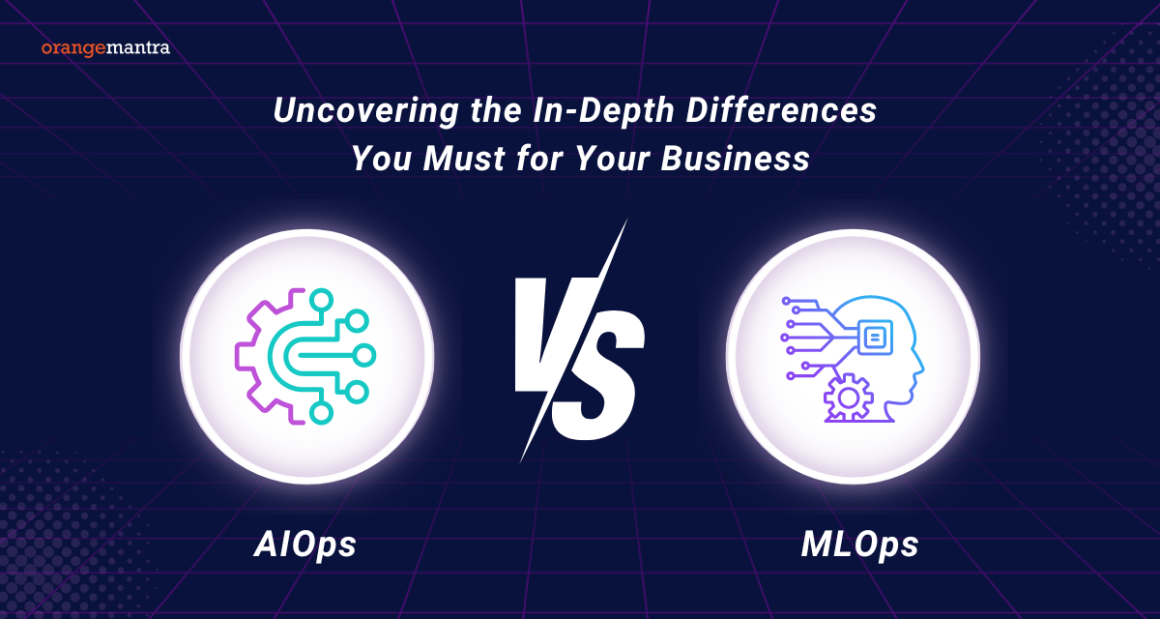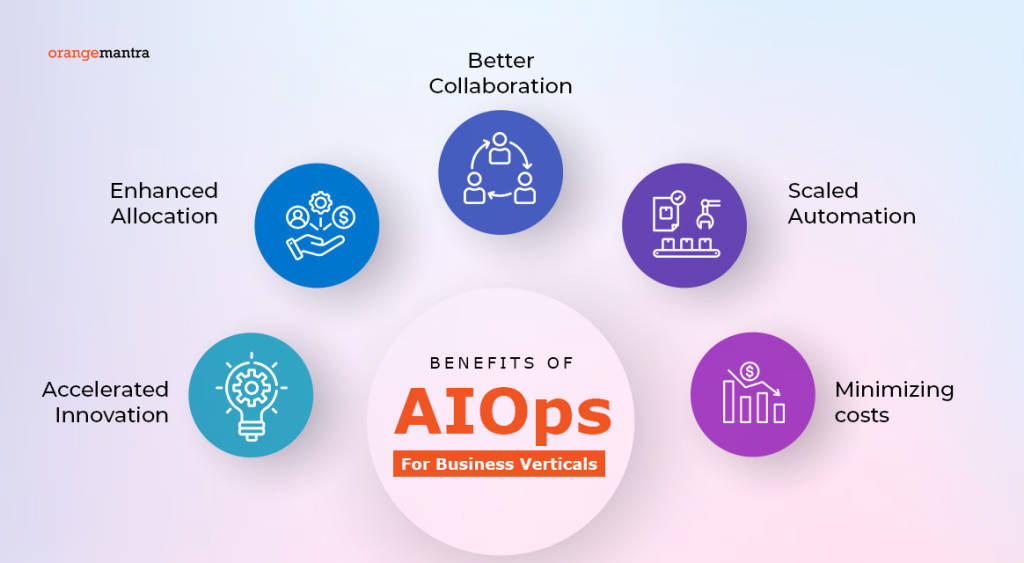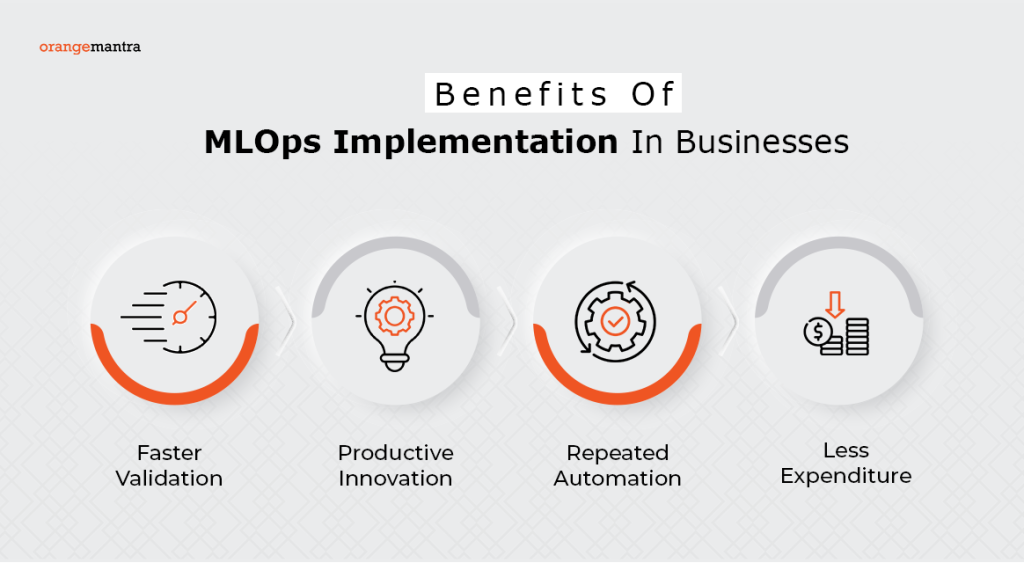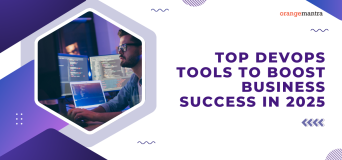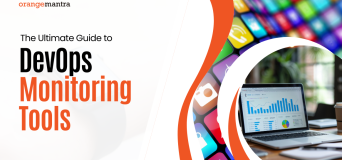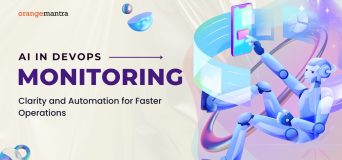Modern technologies like AI and ML offer incredible support to upgrade your business. And such technologies help enterprises to grow to support user demands. So, the AIOps vs. MLOps are the current needs of the verticals. Because the introduction of such platforms helps to streamline and speed up development. And if you want to know how to choose the best for your business, let’s dive in.
An overview of AIOps
Artificial Intelligence, or AI is working as an inevitable technology to make every vertical smarter. Integrating the IT operations will name it as AIOps which combines AI and ML algorithms. This blend of technologies can enhance and automate the various IT-related tasks. You can name them even scheduling, casualty determination, loophole detection, etc. These advanced technology integrations like AIOps vs. MLOps, utilize modern techniques. And it enhances service desk, monitoring, and automates other functions. The AIOps platforms help firms utilize multiple technologies to collect data. So, you can use it for tasks like:
- Logs, configuration status, and other data for operation
- Examine the data and conclude as per different patterns
- Accurate use helps to make the tasks faster
How can MLOps be defined?
Now we have Machine Learning integration for the operations. MLOps is a framework for collaboration between operations and data scientists. It is a multi-disciplinary approach to managing the products and their lifecycles. So, In AIOPs vs. MLOps, the latter is a smart technology to scale and deploy multiple algorithms. As, the smart technology can help with scaling, building, and deploying multiple algorithms. It consists of tools that can help with design, deployment, and training sessions. Moreover, MLOps with its intelligent algorithms helps to analyze, collect, and interpret data. You can detect the anomalies and offer optimized solutions. And contains several processes:
- Defining business goal
- Collecting important data
- Processing and cleaning data
- Building models
- Deploying the final model
Benefits of AIOps for business verticals
Here are some advantages you get when integrating AIOps in your enterprise.
Enhanced allocation
Integrating AIOps helps to customize solutions to help you address the data complexities. Businesses deal with multiple pieces of information in large volumes. And AIOps platform becomes the best tool for different valuable and consistent data flow. You can easily get the dedicated teams to address the crucial incidents. You can hire AI developers for more help. And AI operations and ML power analysis to expedite the identification of root causes. As it delivers informed insights for better results.
Accelerated innovation
With DevOps automation of operational tasks, the AIOps can help transit in their efforts. Also, it helps to redirect the energy to foster innovation into projects. Plus, it helps to shift focus and explore the latest technology integrations. So, the result is business performance to outperform your competitors. In AIOps vs. MLOps, the former offers innovation to get the competitive edge. So, you can evolve your business to improve products and meet user demands.
Better collaboration
When you select AIOps it helps to connect teams and divisions. It helps to get the extensive data sets from disparate sources. It helps to differentiate the isolation between teams for in-depth cooperation and collaboration. When businesses use the AIOps platform, teams can easily integrate their events. And the collaborative approach helps to amplify team communication. So, the teamwork can increase efficiency for favorable results. It amplifies the team’s productivity and for favorable outcomes.
Minimizing costs
Using the smart technology-driven platform helps to cut down costs and save money. You can grab the opportunity to automate the operations and examine the potential issues. The proactive approach minimizes downtime, disruptions, and financial setbacks. Moreover, in AIOps vs. MLOPs, the former streamlines the routines and schedules. It allocates and strategizes to power up the processes. Even organizations can easily optimize IT expenditures and achieve excellence.
Scaled automation
Automation remains at the core of AIOps and offers diverse advantages to IT processes. It empowers the firms to establish automation and speed up the entire operations. This automation helps to encompass the limited resources and helps to complete the processes on time. Also, the service owners help to make it more detailed and precise in flow. Plus, the synergy shared has scalability and self-service capabilities.
Best practices to integrate the AIOps platform
Here are some pointers you must know before using AIOps services.
Recognizing data sources
When you want to integrate AIOps you must research about tools and the goals. The next step is to understand the data sources to get access and migrate tools. You can consider different formats and how the data will get to your location. And with the crucial importance you must decide where the disparate data resides. So, this kind of analysis helps to clean and standardize the data. Businesses can use this data for their operations. You can get the AIOps solutions for your IT operations.
Maintain high quality
In AIOPs vs. MLOPs, the former significantly stands strong for trained data and queries. And it enforces strict data quality standards for your firm. It ensures the data is accessible and actionable in the form of insights. You must abide by the data quality and enhance the step-by-step process. And follow the cleaning, mapping, and analyzing of the data. Data governance tools are the must to use to check quality standards. And you can get IT teams to implement DevSecOps services for security.
Create utilization policy
Organizations can implement AI for various processes and departments. It must adhere to the correct AI utilization policy and train the technology. This policy includes different aspects of the business. Such as the AI usage, responsibilities, AI implementation, and more. And some measures ensure data security in the AI utilization. You can hire devops engineers for your processes. AI utilizes templates to follow policy to offer capabilities with ethics.
Consistently monitor network
You must continously motor the performance before the AIOps platform integration. Also, it is advisable to utilize monitoring tools with in-depth analytics by AI/ML algorithms. With the low frequency, you can integrate less involvement in the performance of the IT teams. You can easily evaluate the AIOps and its components and performance.
Benefits of MLOps implementation in businesses
Let’s look at the advantages of MLOp software.
Faster validation
You can use validation tools and decision-making processes. So, it helps to expand the AI lifecycle to offer the best results. In the AIOps vs. MLOps, the latter offers to customize the model to deploy. You can automate the reporting to use transparent methods as per governance practices. It promotes the adoption of business processes for comprehensive documentation.
- Conduct audits
- Addressing complex models
- Evaluating outcomes
- Monitoring compliance-related tasks
Productive innovation
MLOps offers incredible offers to accelerate innovation. The tools help to cater to data processing, hire AWS developers, analytics, and curated data sources. It is one of the most notable advantages of this ML-powered platform. This helps in a swift development lifecycle and workflow. You can hire Machine Learning developers to reduce time and data usage. Moreover, it can normalize the integration of features for data security.
Repeated automation
As AIOps is incredible to offer the best automation. But the MLOps is not far behind as it supports full automation and rendering. This encompasses the training, evaluation, and deployment. So, everything in the lifecycle gets automated and fastened. The inherent capabilities via automation help in increased efficiency. And the data scientists can easily allocate time to define insights and conduct research.
Less expenditure
If you want to decide between AIOPs vs. MLOPs, then ML can help to work on a single model. So, it doesn’t take an extra model to develop new iterations. Also, this adaptability reduces the additional hardware and software tools for deployment. It leads to major savings rather than spending on operational processes. Plus, this approach offers to identify and mitigate the errors. It can help to contribute to reducing costs with management. Automation can keep the manual mess at bay. It helps the employees to easily increase productivity.
Best practices to integrate the MLOps platform
Here are some of the pointers to integrate the MLOps solutions.
Data validation
If your data is incorrect it can mess seriously. So, before you integrate the MLOps you must know to keep data validation in check. And it encompasses the statistics and the validation in level. Moreover, it offers validation to detect data errors. Plus, it contributes to the reliability of the MLOps solutions. And it contributes to making accurate insights.
Model validation
Along with data, you must verify the model in use. Testing ML models offers different challenges for IT teams. And to get accuracy can be a marathon. So, in AIOps vs. MLOps, the latter offers the best insights for accurate insights. Plus, it offers multiple measuring metrics to measure performance. Moreover, it helps to experiment with tracking and conduct the model validation for business.
Quality checks
To train the Machine Learning you can get the data quality in check. It can encounter real-world data that may lack variables. So, the model gets trained with the incorrect data for best performance. Moreover, you can streamline the functionality and quality checks of the model. The ultimate aim is to ensure a clean and error-free codebase.
Monitor performance
Before the integration of this ML-powered platform, you must monitor the processes. As it helps to identify the factors you can control for data quality. So, you can monitor the performance as it can help to encompass the best capabilities. Moreover, as per the standard metrics, you must predict the model performance. So, the monotint can help to identify errors and remove the performance damaging factors.
AIOps vs. MLOps: An in-depth comparison to know
Let’s look at how these two platforms affect the business processes.
AIOps vs. MLOps: Scope
MLOps usually focuses on making the Machine Learning lifecycle with end-to-end support. It includes the different steps of this process, design, development, testing, and deployment. So, it focuses on streamlining the model development and automating these processes. Also, support even after certain steps.
Whereas, the AIOps vs. MLOps, the former helps to offer you a variety of operations for IT infrastructure. This leverages the AI and ML capabilities to enhance various steps for the IT systems. So, it tries to support apps and networks. and infrastructures. And empowers to optimize performance and ensure high-end reliability of the IT operations.
AIOps vs. MLOps: Objective
As discussed above, MLOPs offer incredible support to ML workflows. And improve efficiency, scalability, and reliability. So, it also includes proactive monitoring and support. It helps to track the performance in the real-time updates. Plus, this helps to practice identifying errors in the development process.
AIOps is here to enhance the collaboration with AI and ML capabilities. It responds to large data volumes and with IT systems. The AIOps platform helps to streamline tasks, predict errors, and much more. And hire dedicated developers to correlate data from disparate sources and detect complexities. Even it offers valuable insights to improve the infrastructure for IT operations.
AIOps vs. MLOps: Focus
Talking about the ML-powered platform focuses on challenges and workflows. It works to streamline the end-to-end lifecycle of the ML development processes. And it even addresses the complexities to avoid any data-related errors. Also, it offers support preprocessing, model training, and ongoing maintenance.
On the other hand, in AIOps vs. MLOps, the former offers vast perspectives that affect the IT infrastructure. It enhances performance, scalability, and responsive nature. It goes beyond the scope of Machine Learning models to analyze and optimize. So, it can include networks and AI-driven insights for the management.
AIOps vs. MLOps: Components
The most important thing is that MLOps offers mechanisms to vision and track changes. So, it ensures streamlined productivity with the deployment tools and interaction. And the monitoring solutions offer essential real-time tracking of the performance. While collaboration tools offer cooperation between teams.
On the other hand, AI -an AI-powered platform offers automation of processes. It helps to identify the anomalies and predictive analyze the disruptions. This helps to detect the incident and detection. Moreover, it offers coordination and alignment of the business process.
Conclusion:
If you are trying to implement the streamline functioning and quick automation? Then this AIOps vs. MLOps difference will help you get the best platform for your business. Or you can consult OrangeMantra to avail best devops solutions for your assistance.
FAQs
Q1. What is the difference between AIOps and MLOps?
AIOps is a method of automating the system using ML and Big Data, whereas MLOps is a method of standardizing the process of implementing ML systems and bridging team gaps to provide greater clarity to all project stakeholders.
Q2. Which is critical for the success of AIOps and MLOps?
To summarize, AIOps focuses on increasing the efficiency of AI for IT operations by implementing AI and ML. In contrast, MLOps focuses on improving the effectiveness of machine learning development methods by using DevOps principles and methodology.
Q3. What are the four main stages of AIOps?
AIOps also uses natural language processing, event correlation, and statistical models to improve the ITOps workflow. To achieve these objectives, the essential steps of AIOps operate together, including data gathering, model training, automation, anomaly detection, and continuous learning.
Q4. Is MLOps the future?
The future of MLOps is bright. Organizations may create robust and efficient operational processes by detecting and evaluating emerging trends, then implementing them and proactively tackling the associated issues.
Q5. Will MLOps replace DevOps?
MLOps extends DevOps concepts by filling in the gaps. While MLOps principles are still being developed, similar core notions to those used in DevOps are currently being implemented.
